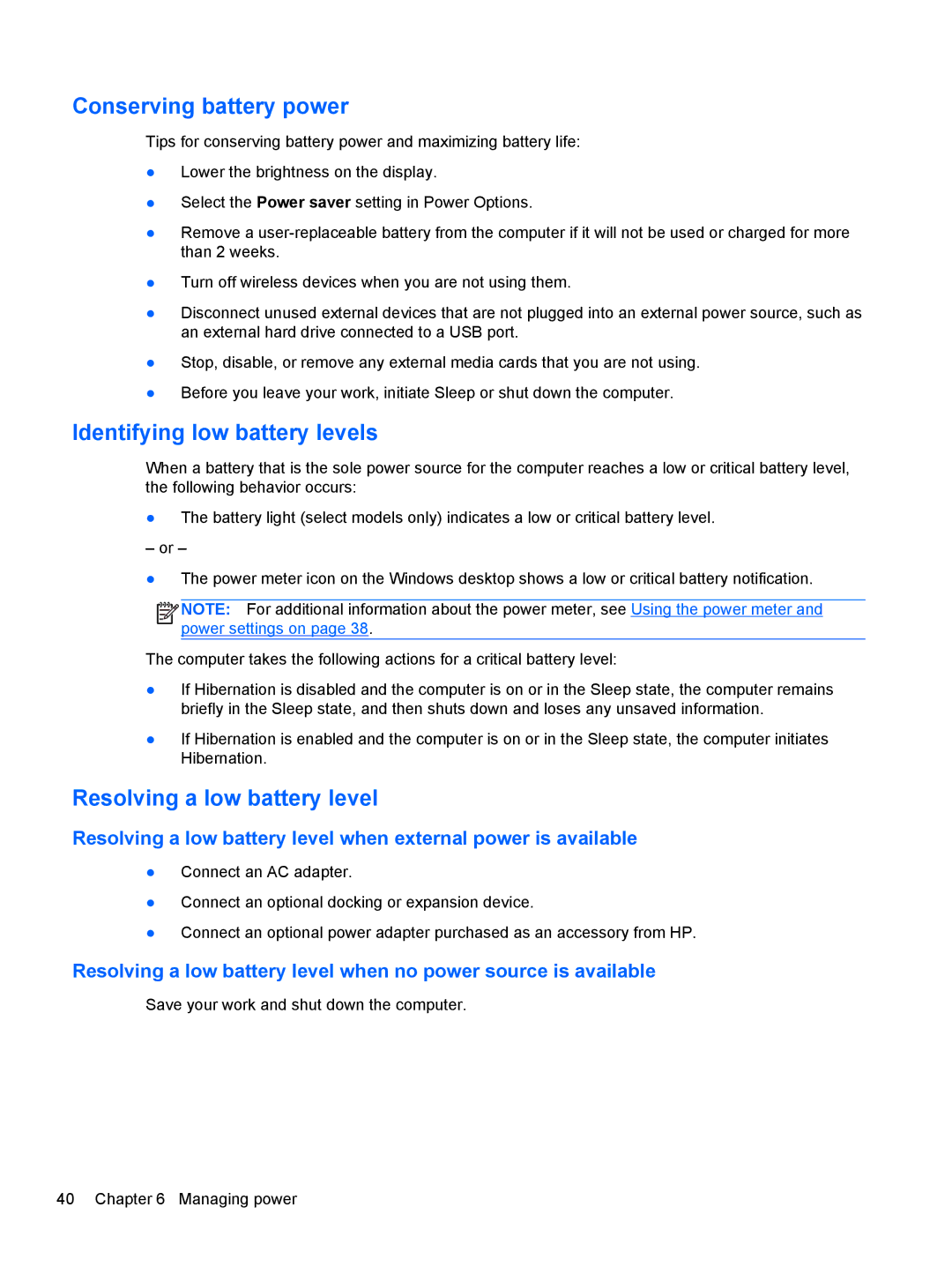Conserving battery power
Tips for conserving battery power and maximizing battery life:
●Lower the brightness on the display.
●Select the Power saver setting in Power Options.
●Remove a
●Turn off wireless devices when you are not using them.
●Disconnect unused external devices that are not plugged into an external power source, such as an external hard drive connected to a USB port.
●Stop, disable, or remove any external media cards that you are not using.
●Before you leave your work, initiate Sleep or shut down the computer.
Identifying low battery levels
When a battery that is the sole power source for the computer reaches a low or critical battery level, the following behavior occurs:
●The battery light (select models only) indicates a low or critical battery level.
– or –
●The power meter icon on the Windows desktop shows a low or critical battery notification.
![]()
![]()
![]()
![]() NOTE: For additional information about the power meter, see Using the power meter and power settings on page 38.
NOTE: For additional information about the power meter, see Using the power meter and power settings on page 38.
The computer takes the following actions for a critical battery level:
●If Hibernation is disabled and the computer is on or in the Sleep state, the computer remains briefly in the Sleep state, and then shuts down and loses any unsaved information.
●If Hibernation is enabled and the computer is on or in the Sleep state, the computer initiates Hibernation.
Resolving a low battery level
Resolving a low battery level when external power is available
●Connect an AC adapter.
●Connect an optional docking or expansion device.
●Connect an optional power adapter purchased as an accessory from HP.
Resolving a low battery level when no power source is available
Save your work and shut down the computer.
40 Chapter 6 Managing power
